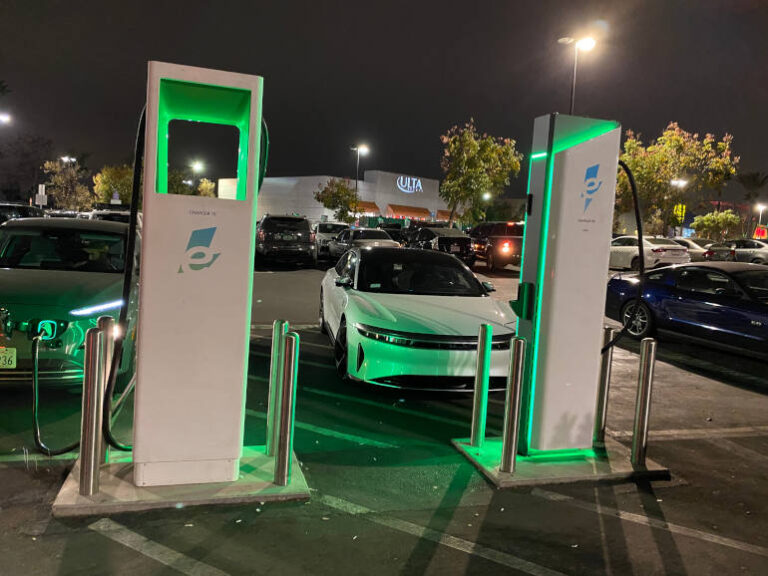The electric vehicle (EV) market in the United States is poised for significant growth, regardless of the current political uncertainties. The rise of EVs is not merely a trend but a necessity, driven by state policies, economic benefits, and national security concerns. Businesses stand to gain tremendously from this shift, as EVs offer a sustainable, cost-effective solution that aligns with both corporate goals and government mandates.
In the latest Fleet News Group podcast episode, David Lewis, Founder and CEO at U.S. based MoveEV, provides some local insights and a glimpse into the future for Australian Fleet Managers.
The political landscape and its impact on EV adoption
The political climate in the United States is undeniably complex, especially with the upcoming presidential election. The potential return of Donald Trump to the presidency has raised questions about the future of environmental regulations and the support for EVs. However, as David Lewis, a prominent figure in the EV transition industry, points out, the momentum behind EVs is now too strong to be derailed by any single political figure or party.
Lewis highlights that state governments hold significant power in shaping environmental policies, with around 25 states already having mandates that push for the adoption of EVs in both government and commercial fleets. This decentralised approach ensures that even if federal policies shift, the drive toward electrification will continue unabated.
Moreover, both the Democratic and Republican parties recognise the economic and security benefits of EVs. The creation of jobs, reduction in operating costs for businesses, and enhancement of national security through reduced dependence on foreign oil are compelling reasons for continued investment in the EV sector. As Lewis asserts, “The cat’s out of the bag here,” indicating that the EV market’s growth is inevitable, regardless of who occupies the White House.
Positive market signals for EV growth
Several factors contribute to the positive outlook for EVs in the U.S. market. One of the most significant is the role of state-level policies that mandate the transition to electric fleets. For instance, California’s mandate that 25% of all fleets with over 100 vehicles must be electric by 2025 is a clear indicator of the direction in which the market is heading. Such policies ensure a steady demand for EVs, driving innovation and investment in the sector.
In addition to state mandates, the economic benefits of EVs are becoming increasingly apparent to businesses. EVs offer lower operating costs compared to traditional gasoline-powered vehicles, as they require less maintenance and benefit from lower fuel costs. For Fleet Managers, this translates into significant savings, which can be reinvested into other areas of the business.
Furthermore, the adoption of EVs is not just about cost savings; it is also about enhancing operational efficiency. As Lewis notes, charging EVs at home, a growing trend among fleets, ensures that vehicles start the day with a full “tank,” eliminating the need for frequent refuelling stops. This not only saves time but also increases the uptime of the vehicles, a critical factor for businesses that rely on their fleets to maintain productivity.
The business case for EVs
For businesses, the shift to EVs represents a strategic move that aligns with broader sustainability goals while also offering tangible financial benefits. Companies that transition to EVs are not only reducing their carbon footprint but also positioning themselves as leaders in the growing green economy.
Lewis’s company, MoveEV, is at the forefront of this transition, offering solutions that address the challenges associated with home charging and reimbursement. Their product, ReimburseEV, simplifies the process of reimbursing employees for the electricity used to charge company vehicles at home. By ensuring accurate measurement and transparent reporting, ReimburseEV eliminates the bottlenecks that have traditionally hindered the widespread adoption of EVs in fleets.
This innovation highlights the broader trend of businesses increasingly embracing technology to facilitate the transition to EVs. By leveraging telematics and other advanced tools, companies can monitor and optimise the performance of their electric fleets, ensuring they maximise the benefits of this new technology.
The road ahead
The future of EVs in the United States is bright, with the market expected to grow exponentially in the coming years. The combination of supportive state policies, economic benefits, and technological advancements ensures that EVs will play a central role in the country’s transportation sector.
For businesses, the message is clear: the time to invest in EVs is now. By transitioning to electric fleets, companies can reduce their operating costs, enhance their sustainability credentials, and position themselves as leaders in the evolving green economy. As Lewis aptly puts it, “America has been leading the auto industry for the last 100 years, and I don’t think that we’re going to relinquish that lead to any other country lightly.”
So while the political landscape in the U.S. may be uncertain, the future of EVs is anything but. The positive market signals and the growing recognition of the benefits of EVs suggest that the U.S. is on the cusp of an electric revolution—one that will benefit businesses, consumers, and the environment alike.







